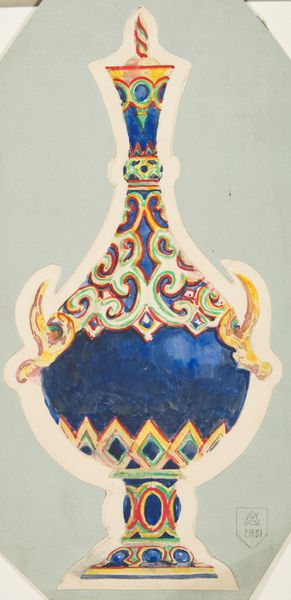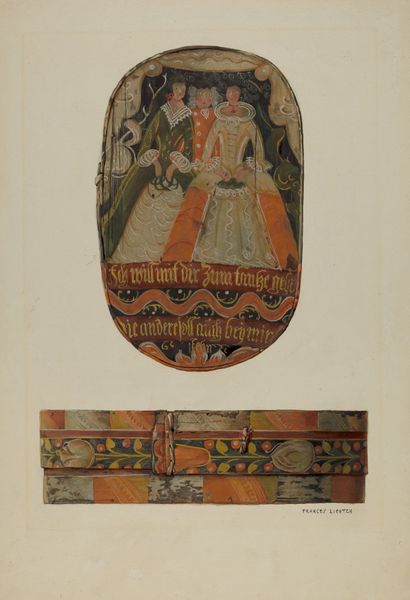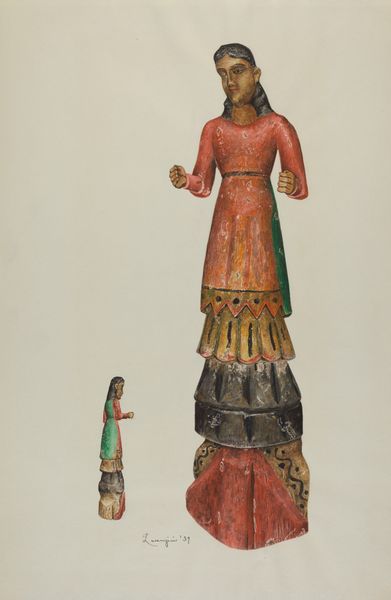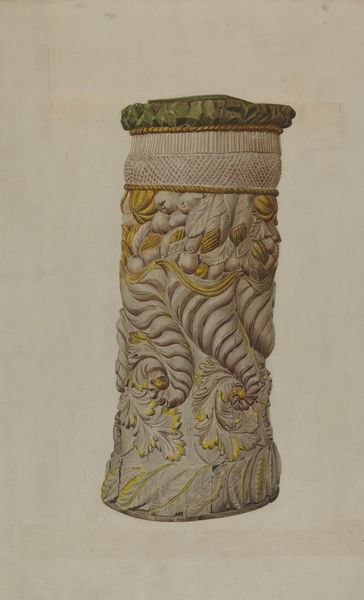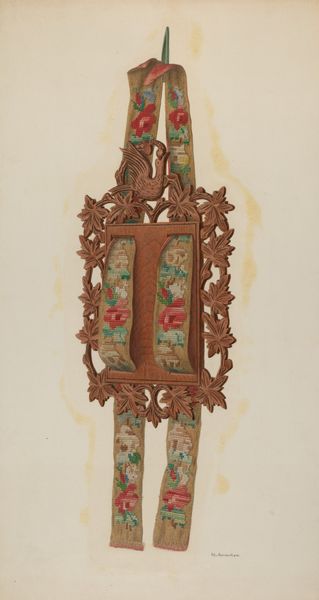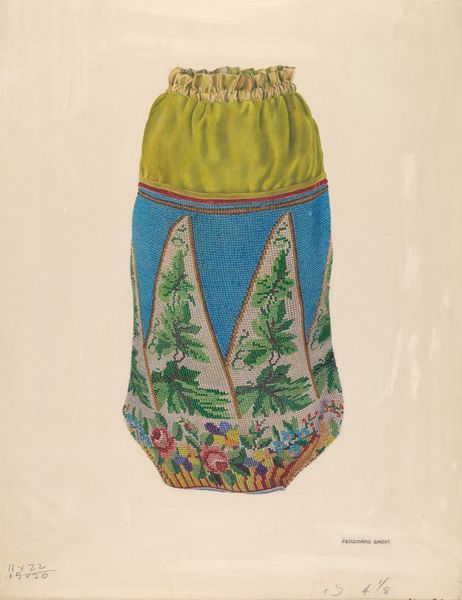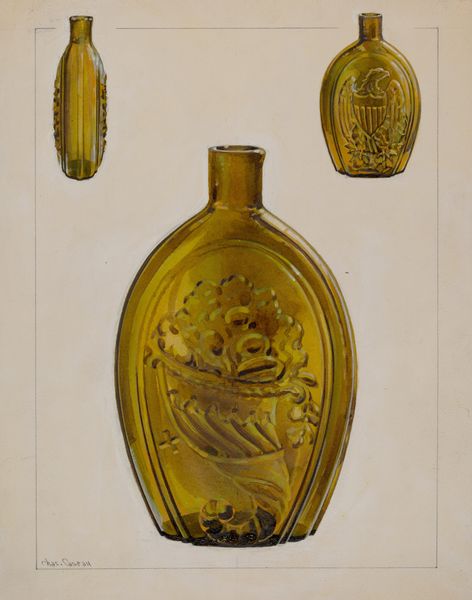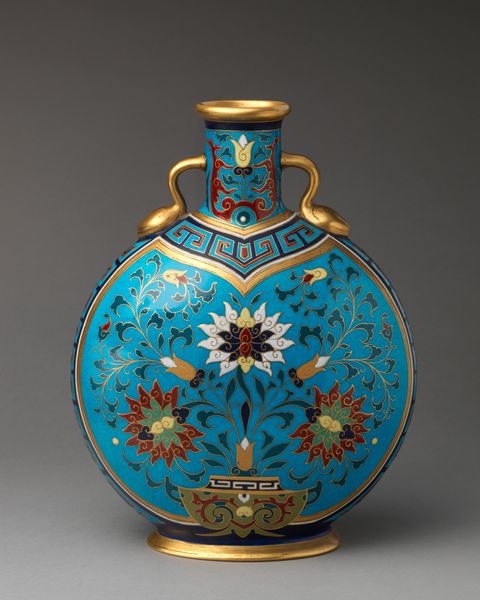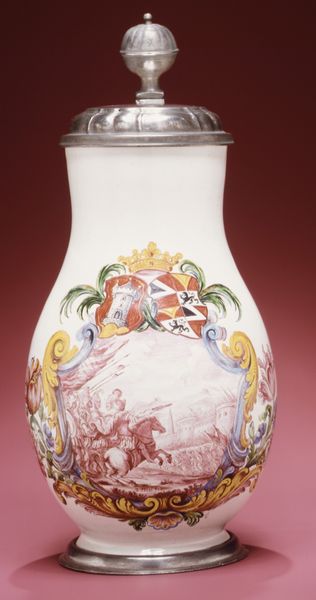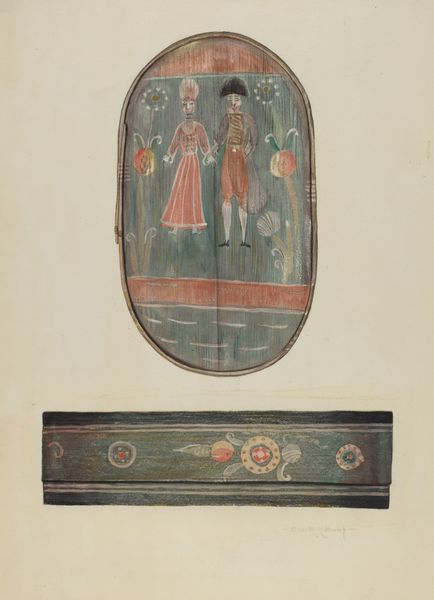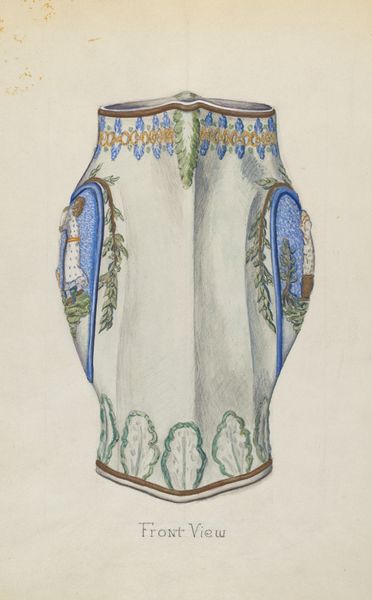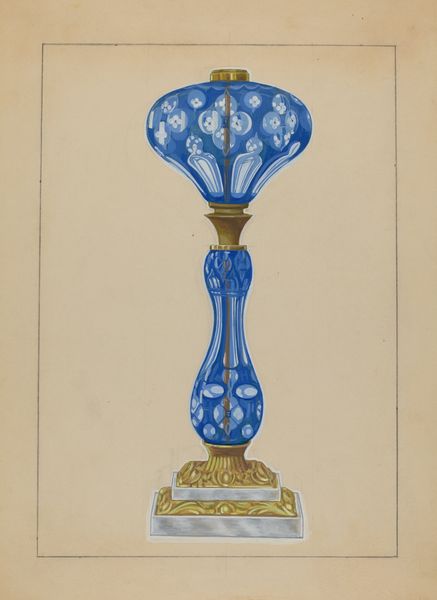
drawing, print, ceramic, watercolor
#
drawing
# print
#
landscape
#
ceramic
#
traditional architecture
#
watercolor
#
ceramic
#
earthenware
#
watercolour illustration
#
decorative-art
#
miniature
#
watercolor
Dimensions: sheet: 10 11/16 x 8 3/8 in. (27.1 x 21.2 cm)
Copyright: Public Domain
Editor: Here we have Virginia Ferrari’s "Design for a Decanter," likely created sometime in the 19th century. It's rendered in watercolor and drawing techniques. I find it really ornate and delicate. What stands out to you in this piece? Curator: Immediately, the conflation of design and representation draws my attention. Is this about craft? About industry? Note the way the design flattens, denying the decanter's functionality even as it depicts it. Ferrari appears to be exploring the social function of such luxury items and also perhaps commenting on who could access such artistry at that time. Does this object critique class structures even while contributing to it? Editor: So, by representing it in this illustrative way, the artist might be making a statement on labor and consumerism at the time? I see how the materiality of the decanter itself – presumably ceramic – contrasts with its delicate painted rendering. Curator: Precisely. And consider the landscapes and figures depicted within the design. These miniaturized paintings become commodities themselves. Are they celebrating artistry, or packaging it for consumption? Who would have this? For what purpose? Editor: That’s a great point. It makes me think about how art is so intertwined with the economic circumstances of its creation and reception. Curator: The design simultaneously elevates the status of both functional objects and miniature landscapes, while subtly commenting on labor through material presentation. Look how even a watercolor illustration requires material extraction. This design emphasizes the relationship between art, commodity, and labor practices. Editor: I hadn't considered the supply chain behind something as seemingly simple as watercolor. This was very helpful. Curator: Likewise, examining material and social contexts opens up new avenues for interpreting artworks, changing my initial perspective.
Comments
No comments
Be the first to comment and join the conversation on the ultimate creative platform.
